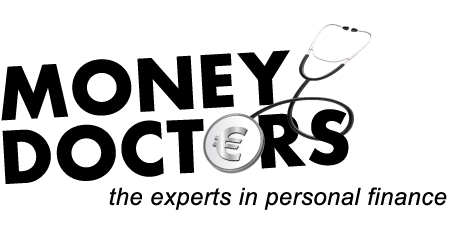Billionaire JP Getty’s formula for success was “rise, early, work late and strike oil” but few of us will reach that utopia so it’s back to the nitty gritty… save. The lockdowns have been good to us in that its given us time to save plus nowhere to spend it ! But wanting to save money and actually doing it are two very different things.
Before you can start putting away money for a rainy day, you need to make savings in your day-to-day spending. The key to saving is breaking old habits and fostering new ones, so you must be willing to adopt a new approach to spending to start seeing savings. Remember personal finance is 20% knowledge and 80% behaviour. Doing a budget first to determine how much you are spending and how much you can save is essential. Here John Lowe of MoneyDoctors.ie in the first of two parts on saving gives his A to L of the saving mentality : check in on next week for part 2 – the M to Z of saving.
A is for assessing the situation
Before you can start getting your financial house in order, you need to identify the cracks.
Do you frequently run out of money just before pay day? Do you tend to splurge on things you never use? The only way to identify your financial foibles is to record them. Write down what you spend and track the trends.
B is for budget
Once you have identified What you actually spend, calculate what you should spend.
First make a list of all your monthly bills and deduct the total from your income. It’s a rough estimate but should give you an idea of whether you are living within your means or not.
Now look a month ahead – what expenses are coming up? Apart from the basic costs, include less frequent bills, like insurance, school fees and so on, when working out your budget. A successful budget is a realistic one and includes all your expenses. Email me for a simple budget planner spread sheet with all the categories that even tots itself up…
C is for comparing
Not only do you need to cut out purchases you can’t afford, but also you need to make the right choices on necessary purchases.
Arm yourself with the maximum information before making a purchase. Where is the item available? How much does it cost elsewhere? Are there any special deals or discounts? Can you buy it more cheaply online?
Shopping around might seem like a cliché but by comparing the options before you buy, you can ensure you get the best possible value. The Competition & Consumer Protection Commission (CCPC) produces regular cost comparisons and price surveys on www.ccpc.ie.
D is for dealing with your debt
If you have a big balance on your credit card or are crippled with other debts, look at these areas first to halt the build-up of more debts.
If you are struggling to repay your loans, let your lenders know and engage with them to devise alternative payment plans. Credit cards especially have very high interest rates so failing to chip away at that debt can have major consequences for your pocket. An Post Money have the best deal for transferring your credit card balance over – 15 months at 0%. But you’ll need a clean credit history to do so.
E is for energy
Does your gas or electricity company offer good value?
If not, consider using a different tariff to reduce your bills, or switch to a new provider. Electric Ireland, formerly ESB, have a range of new price plans and dual fuel offers and quickly were followed by competitors. The company said its electricity price cuts would save households about €120 a year.
Recent changes in the gas and electricity markets mean more choice for consumers. Typically utility firms will give a small discount if you opt for online billing and pay by direct debit.
F is for fares
Some travel spending, such as the commute to work, is hard to avoid. If you use public transport to get to work, buying your travel tickets via the government’s Tax Saver scheme can reduce your annual bill by more than half.
Similarly, the ‘bike to work’ scheme can reduce costs for cyclists, by allowing them to buy a bike in a tax-efficient manner – check out www.taxsaverbikes.com . Before you take a national train or bus service, check the offers available on the bus or rail operator’s website.
When booking a flight, beware the fees and charges that can add a hefty chunk to what initially seemed like a good deal. Baggage charges, taxes and priority boarding can all inflate the cost.
G is for groceries
In the past year, food and non-alcoholic drink prices have increased by 1.6 per cent, according to the Central Statistics Office.
Shaving a few euro off your shopping bill each week could make a big difference to your finances. Simple changes like switching to own brands for certain products, availing of special offers and making shopping lists to avoid impulse buys will all help to keep your spending in check. However, don’t be fooled into buying in bulk if you won’t actually use the product. Volume discounts are only good value if you have a real need for the additional items. Stocking toilet rolls long a thing of the past !
Another way to save is to use a retailer’s loyalty card system, which allows you to earn points as you shop. Download the free app Stocard to house ALL those loyalty cards instead of having to carry them around. No missing out on discount vouchers. You should track and record all your discretionary spending too with the free Money Doctor app which gives you the top 5 spends of the period, the total amount you have spent and geographically where you spent every cent ! No more frittering away money…
H is for homemade
It might seem too obvious to mention, but making your own lunch is a guaranteed way to save a few euro.
A working couple who eat out at lunch or have a takeaway sandwich each spend at least €9 a day on lunch – around €2,160 each a year. Think how many sliced pans, cheese slices and packets of tinfoil that would buy.
I is for insurance
By law, consumers must have at least third-party insurance if they own a car. Cost comparison surveys have repeatedly shown that shopping around for motor insurance can save drivers more than €1,000 annually, making it the type of insurance with the biggest potential savings.
Home insurance is not a legal obligation, but may be stipulated by a lender. Cut costs by making sure your home is not over-insured. Your home should be insured for its reinstatement value – the cost of rebuilding it – not the market value.
This can make a considerable difference to the premium. If you decide to change your cover to get a better deal, don’t base a decision on the premium alone, as the level of cover can vary considerably. A standard benefit with one insurer might be an optional extra with another.
J is for joining clubs
J could just as easily be for January, the month when people sign expensive contracts for gyms, or June, the month when people realise they haven’t set foot in their expensive gym in weeks.
Do you fork out hundreds of euro a year for your gym or swimming pool, but don’t feel you get your money’s worth? Certainly the lockdown has not helped but they will all be open soon so avail of the membership or cut it out. If your monthly membership is merely a guilty reminder of lost euro, either use it frequently or cancel your contract and opt for a cheaper pay-as-you-go deal. Beware of tricky terms and conditions that can apply to cancelling gym contracts. Remember local parks are free to jog around.
K is for kids
Parents are given some respite with the € 140 per month Child Benefit per child but the vast majority use it for the very purpose it was legislated – to help defray child costs. Parents still face huge expenditure on creches, school books, extracurricular activities and so on and very few have the luxury of being able to invest their Child Benefit for 3rd level education ( which without fees can cost up to € 42,000 per child for the 4 year basic qualification )
Childcare costs have stayed relatively static in the last year, with the latest figures from the Central Statistics Office showing only a marginal increase of 0.3 per cent. But a recent survey by the CCPC revealed huge variations in childcare costs nationwide. Average prices for full-time care for a toddler ranged from €145 per week in Sligo to €220 in Dublin 6.
Obviously parents don’t want to compromise on the quality of service available where they live, but comparing prices is a no-brainer.
L is for luxuries
A savings habit does not have to mean the end of fun. However, if you are trying to cut back, spending on discretionary items is the first to face the chop.
Force yourself to keep a record of treats and indulgences and try to factor them into your budget. If you want to go away for a weekend, try to set aside money for it, rather than booking it on a whim and abusing your credit card. Ray-bans ? Really ?
Next week we will finish the alphabet…stick with me.

